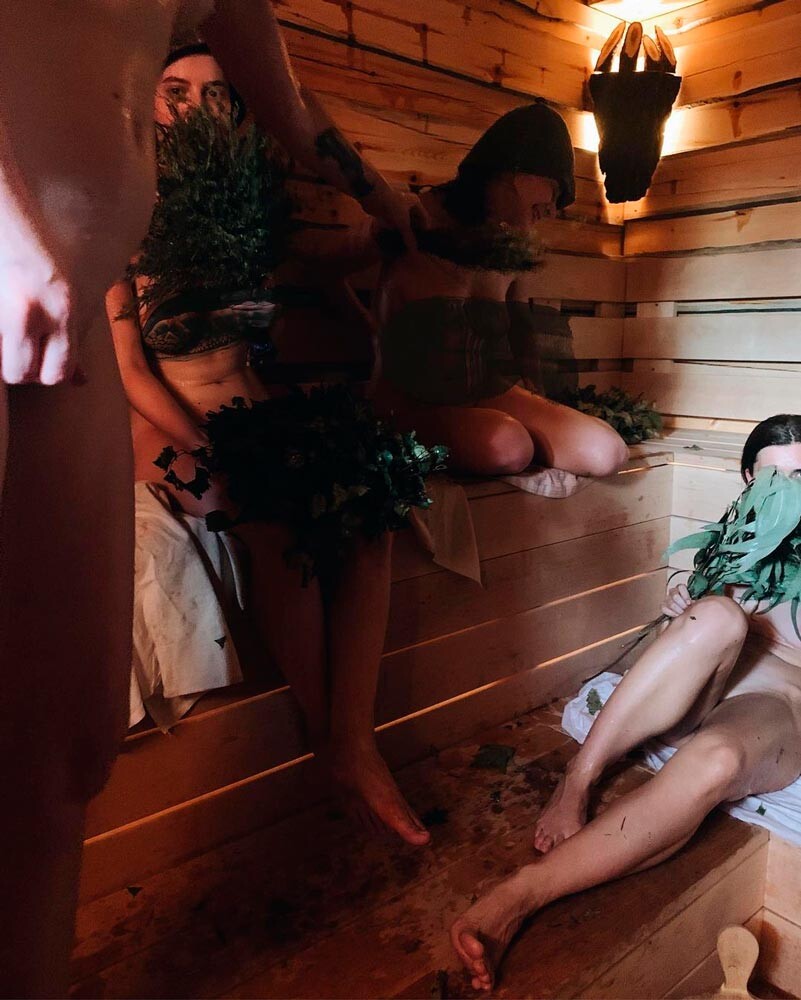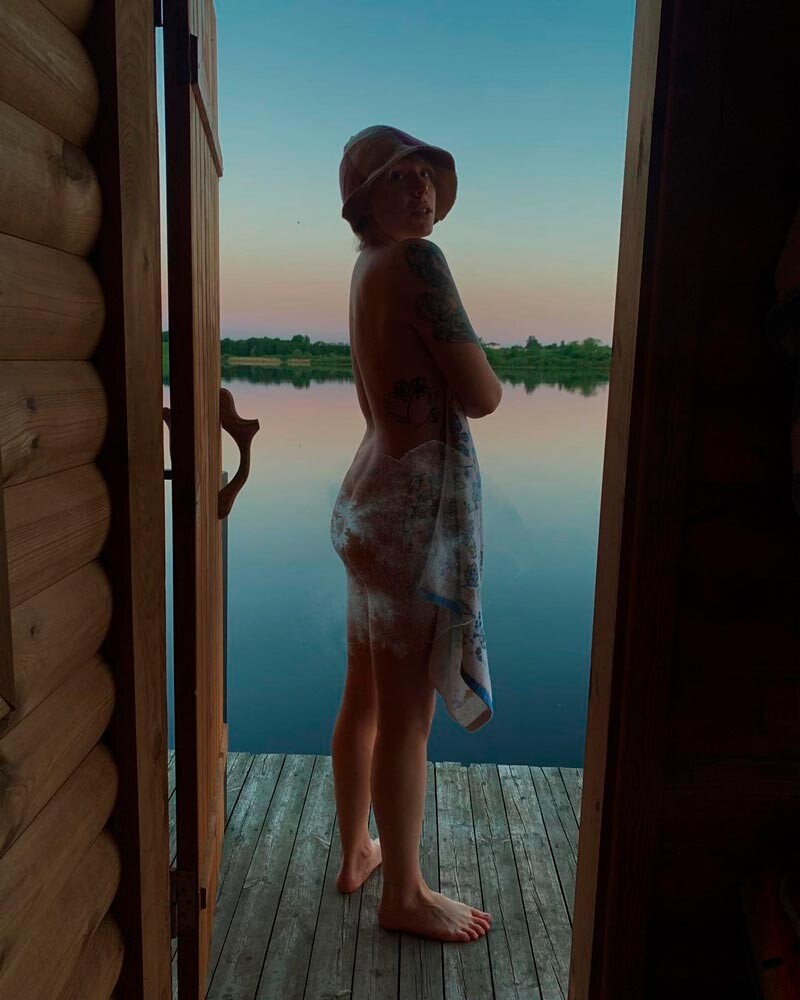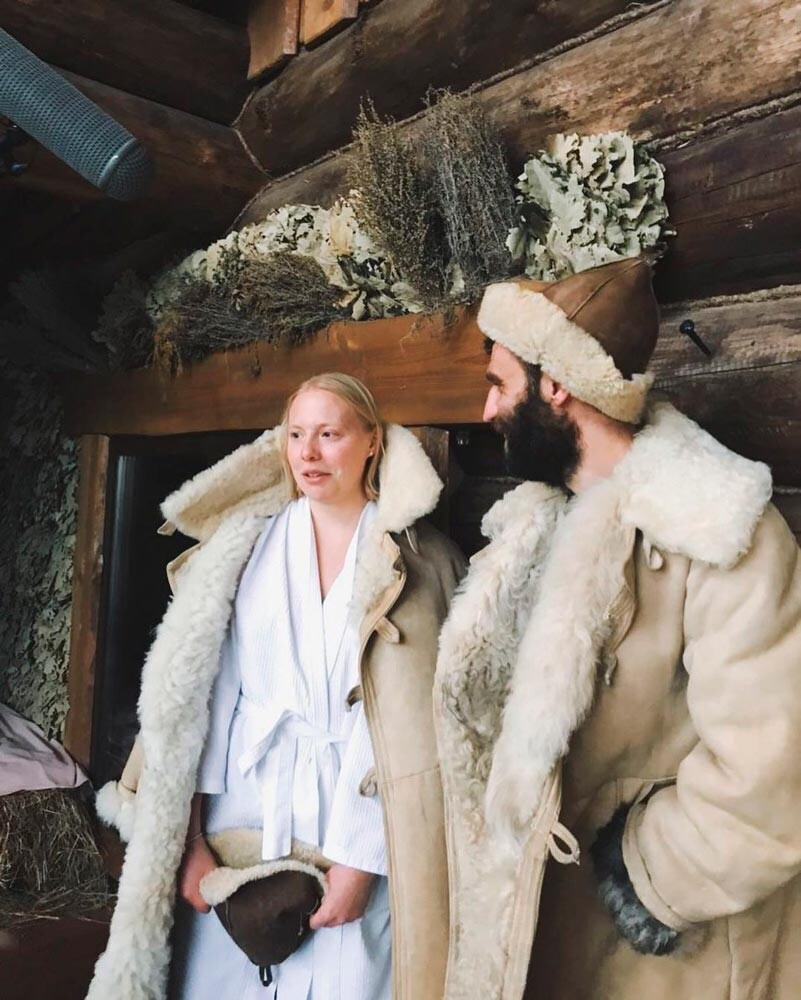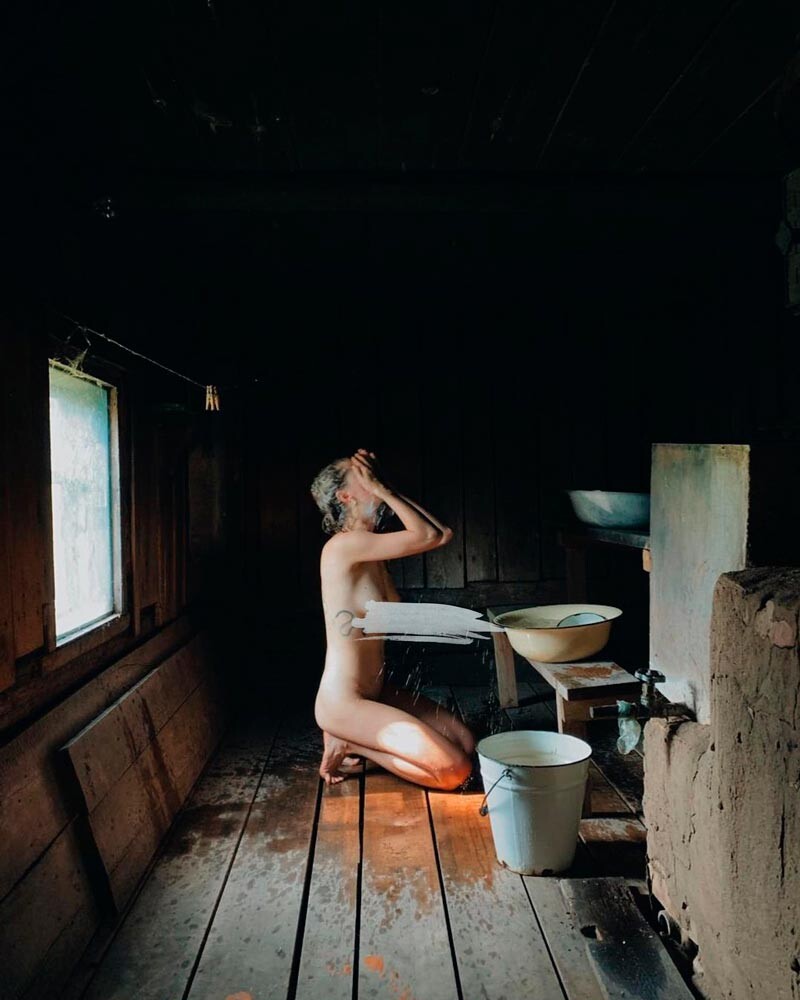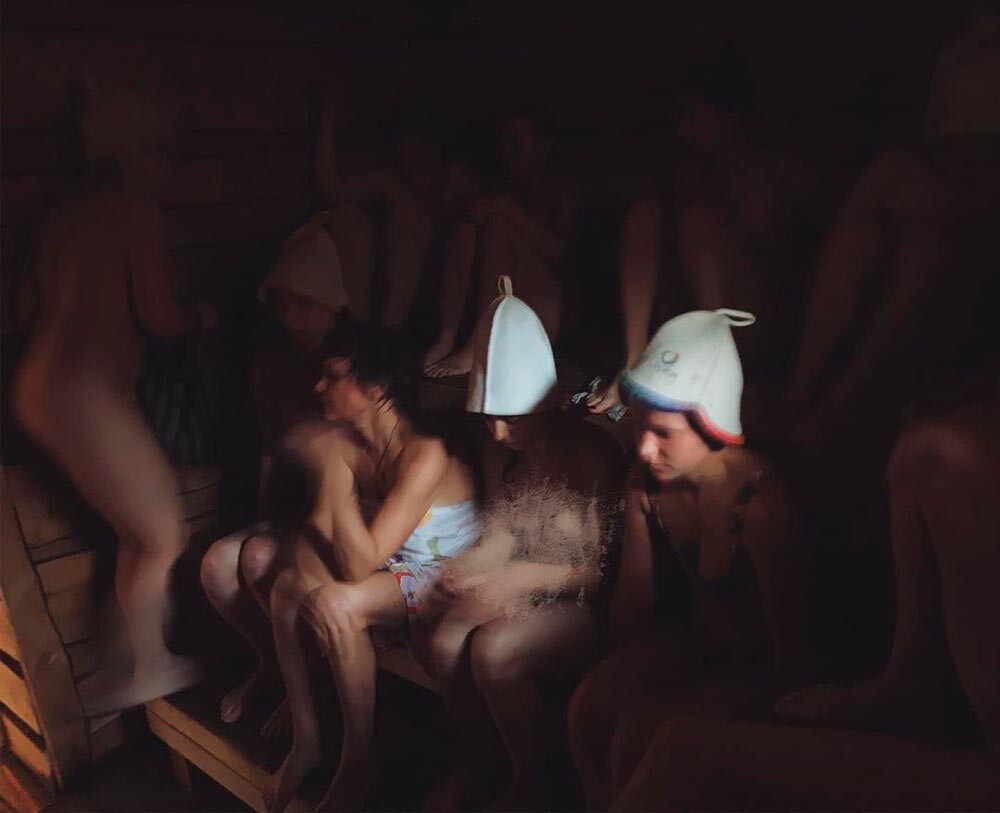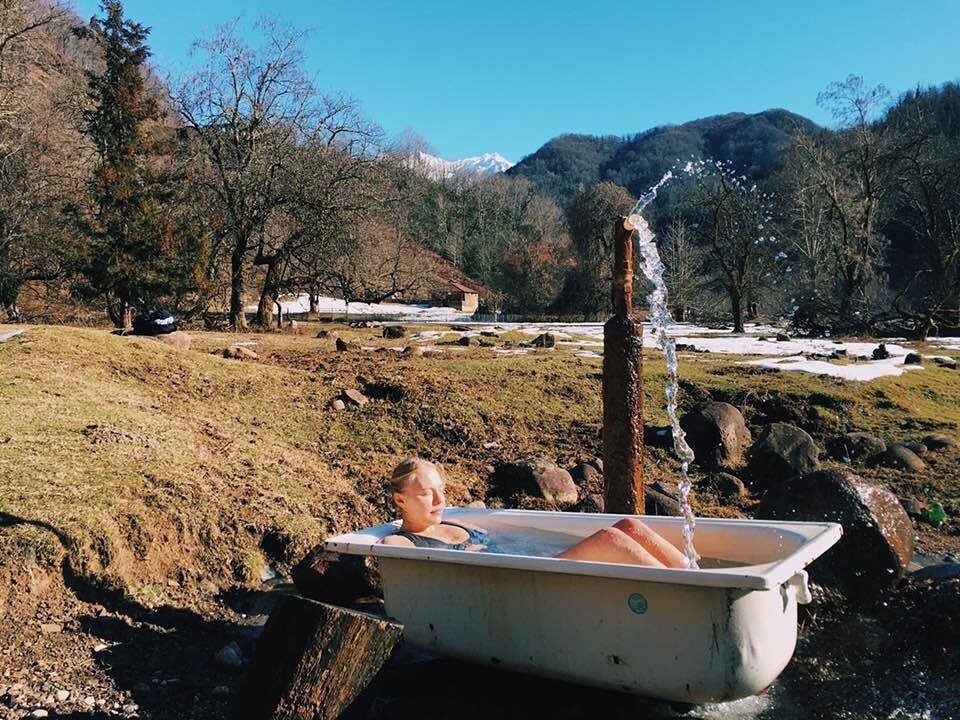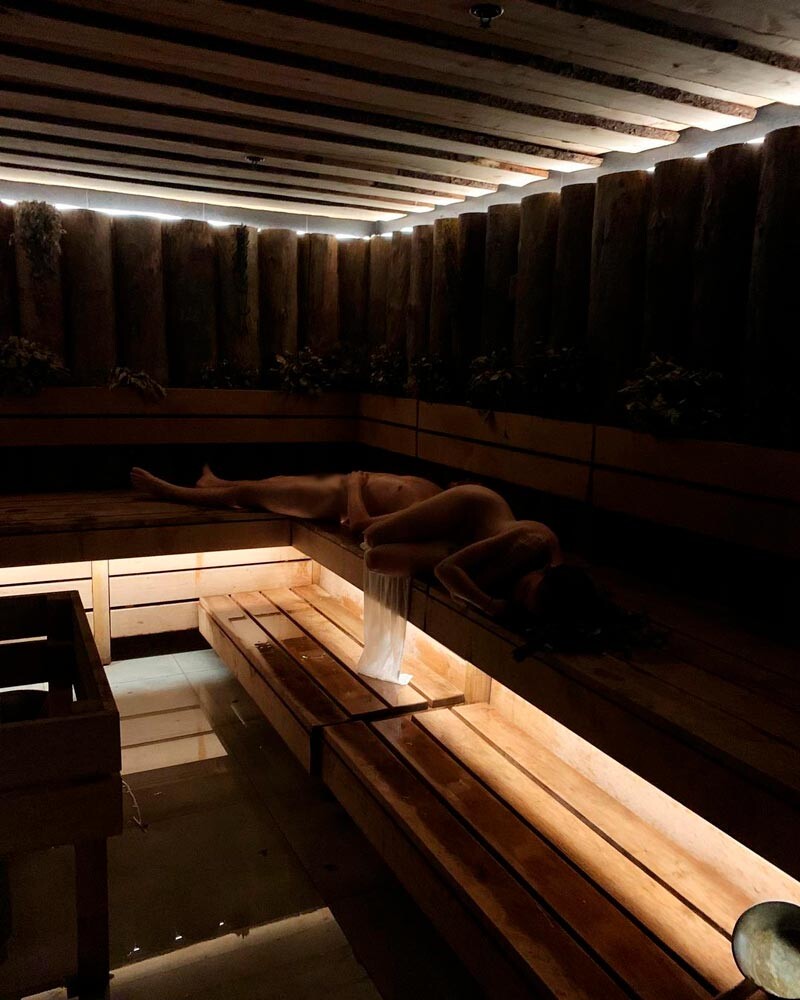This blogger knows EVERYTHING about banya culture in Russia
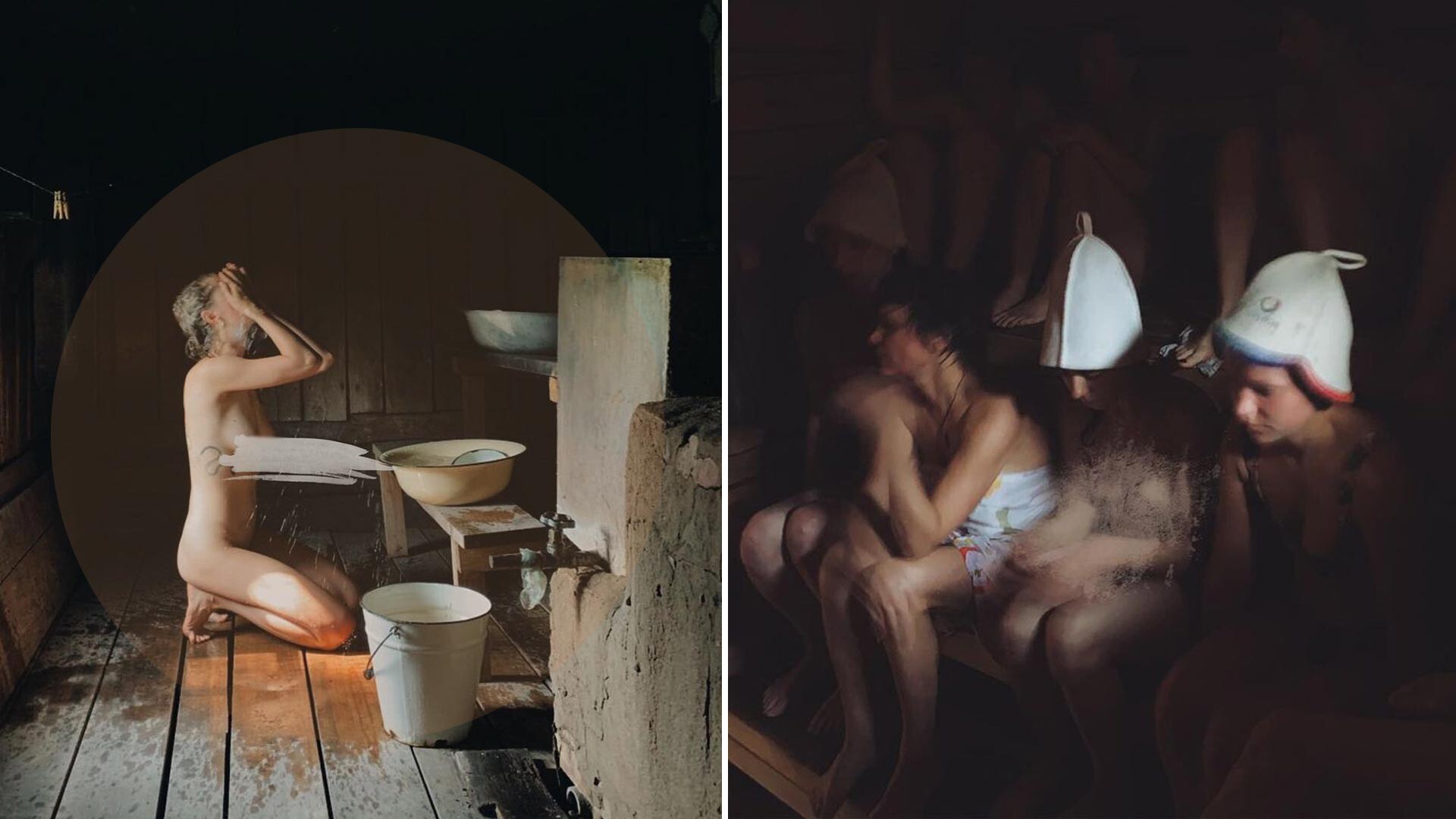
“It was at the Yamskiye Bani baths (in St. Petersburg - Ed.) in the summer. A woman in the steam room was telling a story of how her husband had been bitten in the scrotum by a tick and the women were discussing how the tick had been removed. It was a colorful and very funny conversation and it brought everyone together; it was full of banter, the women were all shrieking with laughter and you couldn’t help but laugh out loud. It was pure joy,” says Anna Artemyeva.
Anna is arguably Russia’s most popular blogger specializing in the topic of the banya. From her hometown, St. Petersburg, she goes on banya expeditions around the country, describing her experiences and giving advice. Today, her account on Instagram alone has more than 10,000 subscribers.
Abuse and compliments in the Russian banya
Regular visitors to the banya are usually women and men aged 30-40 and older, but, of late, young white collar professionals have also started going to the banya. The first thing you should be prepared for in a Russian banya with such people is that the talk can be nasty, as well as funny, Anna explains.
Anna and her younger sister, aged 10, once went to a public banya in Pskov. Her sister didn’t want to undress fully and she was immediately told off by local women, who shouted at her: “Why are you wearing a swimsuit as if you’ve come to a pool?” According to Anna, who herself was criticized for her tattoos: “Thank God you’ve come to the banya - at least, you’ll have a chance to scrub that off your skin.”
“I don’t like confrontation, particularly in the banya, but that was a super-traumatic experience. In other words, you come to the banya to relax, but you are still forced to be in a fighting mood. I think this kind of absence of respect or freedom of choice is a problem and not just in the banya, but, to a certain degree, it is a problem of the older generation in Russian culture,” says Anna.
In the banya, women might also pay you compliments, although the latter can sound rather blunt. “What buns you’ve got, girls, I hope you’ve got someone to caress them” or “What a figure! If only I had had one like that, I wouldn’t have been married just twice”. In the Krasnopresnenskiye Bani baths, Anna once heard someone say: “I wish you a good bath, girls, and a hot-blooded lover boy!”
Anna finds this sort of approach quite to her liking. “I have a tall figure and a sporty physique with broad shoulders. I had a hang-up about it as a teenager, but, in the banya, everyone remarked on my figure and compared me to an Amazonian or goddess. I can’t say it cured me of my hang-up, but it gives you a big boost. Even parents don’t always say everything you want to hear, while here it’s the opposite,” the blogger explains.
Russian banyas can help people overcome their fears or awkwardness about meeting strangers - you’re bound, sooner or later, to ask someone to pass the venik; and you might even agree to brush them with theirs or give them a rub with a loofah, or end up being considerate to others in another way.
Anyone who wants to sample Russian banya culture needs to try a steam bath, one to one, with a professional bathhouse attendant, Artemyeva believes. You might go to an expensive establishment for that, but Anna’s best experiences were in small private banyas.
“I was in Kandalaksha (a city in the Murmansk Region - Ed). The temperature outside was -32°C. We came to see the Northern Lights. It was icy, all around was white as could be. We came across a fine wooden banya with a tiny ice hole. Its owner had jumped [on the ice] and fallen through. He made a hole exactly the radius of his stomach, but everyone else fit through, because he had a tubby physique. All you get there is the steam room, tea, and the home-made ice hole in the warm river. And that simple combination, without any particular service, was better than all the expensive banyas,” Anna concludes.
Strange rituals and meetings with spirits in the Russian North
The culture of private and public banyas has survived most intact in Siberia and Northern Russia, Anna says. Bathhouse attendants provide more or less the same services everywhere, with only the veniks varying - they’re most commonly made from birch, oak or conifer leaves. Rituals and local customs survive in many banyas, however - some hundreds of years old.
For instance, a large number of banyas heated “in the black manner” survive in the North. They combine a steam room and washing room and the banya itself is heated by a fire located in the center of the room under a pile of stones. In Vologda, the custom is to lie down in the banya, so there’s not even the customary bench of special wooden boards for sitting. The idea is that the steam should reach all parts of the body evenly.
“There is a village 400 kilometers from St. Petersburg where the Vepsians live (a small indigenous ethnic group - Ed). Whenever they go to the banya, they ask permission from the bathhouse spirit, the ‘Bannik’, and recite incantations to protect them from misfortune. They still remember that [people] are not the most important denizens of this world and, therefore, treat nature with respect,” Anna explains.
For instance, they try not to have a steam bath at night, both out of folkloric and practical considerations (it is more difficult to damp down a banya at night). They also bow on entering the banya. Mind you, the door lintel at entrances was also very low for practical reasons - the idea being to conserve heat.
Some residents of Arkhangelsk Region recounted to Anna how they had encountered Obderikha, the female spirit of the banya. She is described as a naked woman with long hair, which she wears loose, and large teeth. “Obderikha lives in the banya and she teases people,” is what they say about her. But she can also save people from misfortune - at least, that’s what the locals believe.
“We met a man who ferried people across the local river, the Pinega. He told us how Obderikha had saved him - he’d been poisoned by smoke in the banya and she dragged him outside in time. He added that Obderikha had also helped his widowed sister. She has five children and the spirit is supposed to have cradled her two infant children in her arms, while the woman was getting over the death of her husband,” Artemyeva says.
In the Pinezhsky District in Arkhangelsk Region, interaction with the bannik was part of the wedding customs.
“Before her wedding, the bride-to-be and her female friends would go to the banya, accompanied by a woman with a special role - that of godmother or a sort of auntie figure. She managed the whole procedure and was responsible for the correct observance of the ceremony of transition from girlhood to womanhood. In certain districts of the Penezhsky District, this woman would present the bannik with the bride-to-be’s maidenhood so that the wedding night would pass easily and without discomfort,” according to the blogger, who added that the ritual is no longer observed in our day.
A cleansing feeling and the company of others in the Russian banya
In order to sample the sensation of a steam bath Russian style, Anna advises to do the following three things:
- Combine a steam bath in winter with a dip in an ice hole.
- Go to the banya in hot weather, followed by a swim in a nearby river.
- Go to a large public banya with lots of other people.
“In a public banya, no one knows who you are. You can be anyone - from an accountant to a centerfold model, just relaxing and concerned with yourself. What’s more, Russian banyas seem to have an atmosphere redolent of a church’s. Public banyas are spacious with high ceilings; and because of the heat, the fragrant odors, the humidity and the light, your thoughts seem to dissolve and you are released from all your worries,” the blogger concludes.
If using any of Russia Beyond's content, partly or in full, always provide an active hyperlink to the original material.
Subscribe
to our newsletter!
Get the week's best stories straight to your inbox
